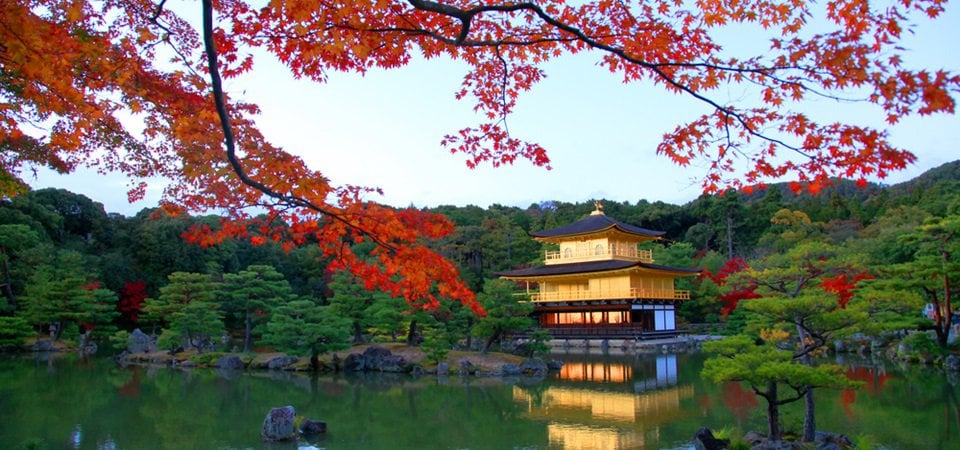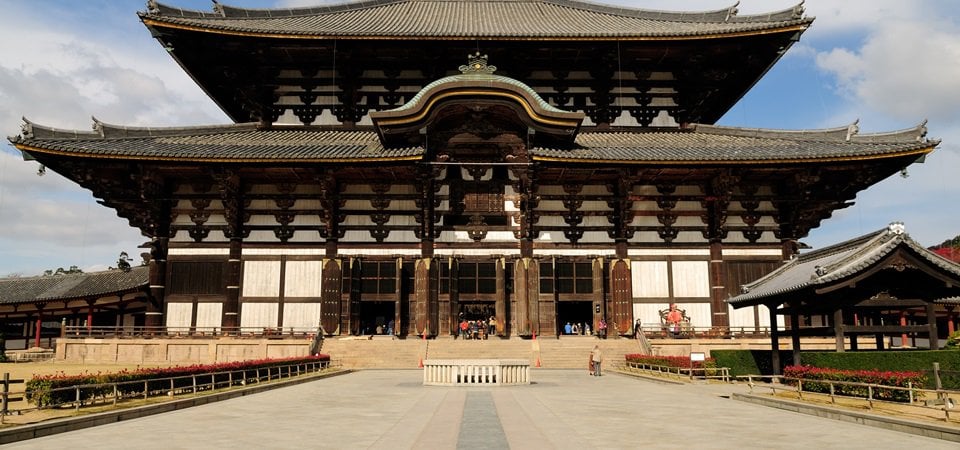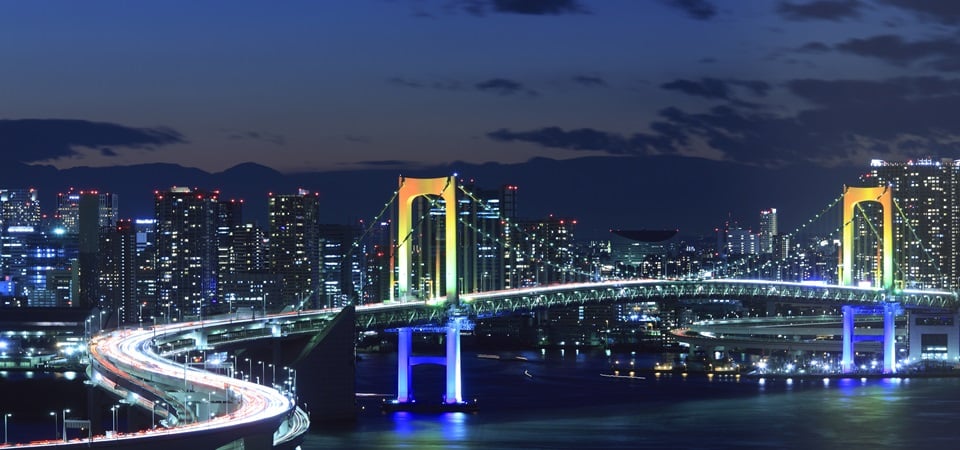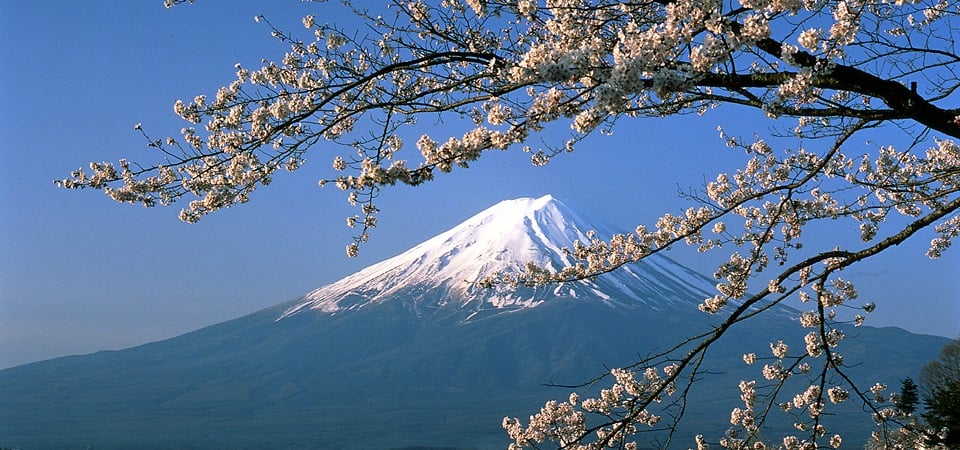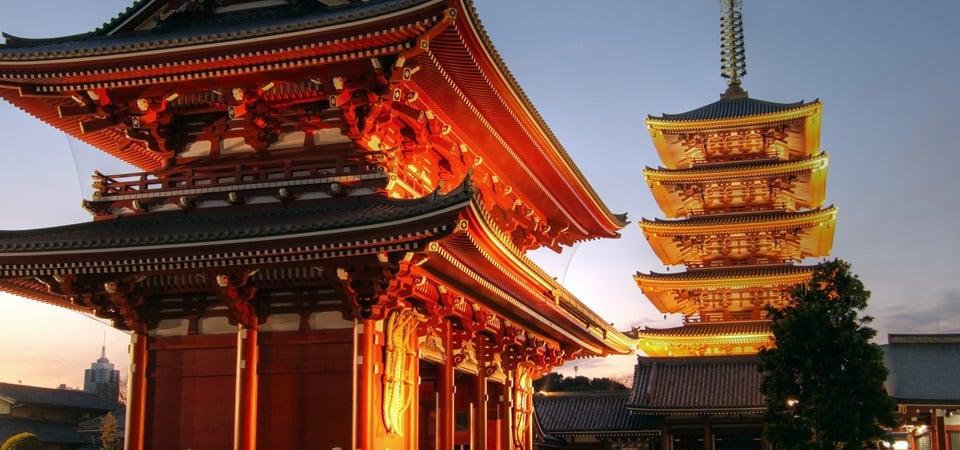Get a taste of Japan’s rich culture and history on a memorable, self-guided tour. Join local worshippers at Tokyo’s Meiji Shrine and spot geishas gracefully strolling through Kyoto’s cobbled streets. Walk on ancient mountain roads and wander through Nara’s 8th-century temples.
Itinerary
📍 Narita International Airport (NRT) to Central Tokyo: 1 h 30 min Haneda International Airport (HND) to Central Tokyo: 50 min
Upon arrival to Tokyo’s airport, our representative will be waiting to assist with sorting the appropriate transportation into the city (boarding the right train or selecting the correct shuttle bus).
The remainder of the day is free at leisure to explore Tokyo independently.
Overnight in Tokyo.
Inclusions:
Today is a self-guided day.
Suggested Self-Guided Itinerary:
Today, visit the hive of activity that is Tsukiji Outer Market. While the inner wholesale fish market has been relocated to Toyosu, the outer market – which boasts around 400 shops – remains a lively centre for visitors and locals alike to enjoy delicious food, and purchase kitchenware and a variety of local specialities and foodstuffs. Sample some of the treats on offer and take the chance to pick up some souvenirs along the way. Many of the shops in the market have been in business for decades, while some renowned food companies, such as Ajinomoto, began their operations here.
Next, head to Zojoji Temple, which was originally built in 1393 as the head temple of the Jodo sect of Buddhism in the Kanto region, before being moved to its present location in 1598 by the shogun Ieyasu Tokugawa, who selected it as his family temple and mausoleum. The main entrance gate, the Sangedatsumon, has survived a number of natural and man-made disasters, and dates back to 1622.
The iconic Tokyo Tower stands in close proximity to the temple, and provides the perfect photo opportunity. After taking some memorable snapshots, move on to the next stop of the tour, Nijubashi Bridge.
Nijubashi Bridge is one of the most picturesque spots within the Imperial Palace grounds. Its name literally translates as “double bridge,” pertaining to the engineering behind its construction. The bridge is open to the public only twice a year — on the day of the traditional annual visit to the palace for New Year's greetings (January 2) and on the Emperor’s official birthday (December 23). On all other days, visitors can only view the bridge from afar.
From here, it is just a hop, skip, and a jump to the National Diet of Japan. It is the centre of Japanese politics as it is the place where Diet sessions are held. However, selected grounds are open to the public such as the common lobby for the visitors, the chamber floor, the rest area for the Emperor, and the central hall.
The final stop of the tour is Hie Shrine. This beautiful, serene Shinto shrine in bustling Akasaka is one of the city's major shrines. Its hilltop location has prompted the installation of escalators to make the shrine more accessible and appealing for those who find the large number of stairs to be a challenge. This gives the shrine's main entrance a very modern and unusual look. Various statues of mythical creatures said to guard the shrine can be found dotted around the complex. Another special feature of this shrine is the back entrance, which consists of a staircase framed by 90 bright red torii gates beneath a canopy of trees. According to Japanese traditional belief, torii gates divide the human world and the spirit world, and are said to be a doorway to a place where the gods can hear our prayers.
Note: The order of this itinerary may change according to the location of your hotel.
Overnight in Tokyo
Inclusions:
☕ Breakfast
Today is a self-guided day.
Suggested Self-Guided Itinerary:
Enjoy the entire day exploring Tokyo or its outlying areas. Make an early morning stop to visit the electronics district of Akihabara or discover Tokyo’s world-class museums and art galleries.
Alternatively, take an excursion outside of Tokyo to Kamakura. One of Japan’s former capitals, Kamakura is a delightful seaside town home to many ancient shrines, temples, and other structures like the Daibutsu, a giant bronze Buddha that stands at 13-meter tall.
Distance and journey time (approximation):
JR Tokyo Station to JR Kamakura Station: 50 min
Note: Roundtrip train tickets to Kamakura can be arranged at an additional cost.
Optional experience : Mt. Fuji Food and Culture Ecotour
Today, see a different side of the iconic Mt. Fuji and support local businesses in the small town of Fujinomiya. The adventure will begin with a pick-up at Shin-Fuji Station at 10:00. After dropping off any extra luggage for storage, take a stroll through the local shotengai, a type of traditional shopping street lined with a variety of shops that is typical in Japan. They can be open-air, or covered arcades that are pedestrian-only zones. Spend some time browsing the shopfronts and a small, local shrine. Seeing how different the shops are from back home is an endless source of entertainment!
Having worked up an appetite for lunch, stop for a yakisoba making session. After learning how to make this delicious Japanese stir-fried noodle dish, tuck in to a hearty meal.
After enjoying this delicious meal head to the next activity – a kimono fitting followed by a visit to a UNESCO World Heritage designated shrine. Learn about the history of this iconic garment before donning a set of robes and exploring more of the town. A local shrine will provide a stunning cultural and historical backdrop for some beautiful photos.
Next, take part in a Japanese sweet-making workshop with a local artisan. Wagashi are traditional Japanese confections that are often delicately shaped to reflect the beauty of the changing seasons, and frequently harmoniously paired with bitter matcha green tea.
End the lovely day out with a cup of tea before heading to the nearby ryokan for a traditional Japanese lodging experience, or back to bustling Tokyo for the evening.
Note:
Mt. Fuji is a very shy mountain and it is visible when the weather is clear.
Time (approximation):
Start: 10:00
Duration: 7.5 h
Optional Evening Tour: Tokyo Street Food Tour
This tour heads inside the lively street food scene of Tokyo: an exciting trip across some of the hidden pearls that can only be found with the help of a local, wandering around the city’s narrow streets.
A local English-speaking food expert will provide an escort through tiny izakayas (Japanese-style pubs) and small traditional restaurants and bars, each boasting distinctive atmospheres in heart of the traditional Japanese entertainment districts.
None of these local taverns normally accept reservations, but the expert guide is able to pick, depending on the evening, the right areas (always in central Tokyo) and venues to find available seats. Because of this, the tour is always unique and different for each guest.
Meet the food expert at the train station and enjoy 4 to 5 different venues during the tour. Although the menu is set, the guide will ensure stomachs are full and taste buds are entirely satiated with a range of different options.
Time:
Start: 17:00
Duration: 3 h
Overnight in Tokyo
Inclusions:
☕ Breakfast
📍 Tokyo Station to Kiso-Fukushima Station: 3 h
Start the journey in the afternoon through Nakasendo in Kiso Valley, one of the five routes that branched off the former capital of Japan.
The bullet train ride from Tokyo to Nagoya is then followed by the scenic journey on the limited express train Wide View. Upon arrival at Kiso-Fukushima Station, check-in into the hotel.
Overnight in Kiso-Fukushima
Inclusions:
☕ Breakfast, 🍗 Dinner
📍 Kiso-Fukushima station to Nakatsugawa station: 30 min Nakatsugawa station to Magome: 15 min (bus or taxi)
Today is a self-guided day.
Today start the journey to Tsumago, one of the post towns that flourished in the Edo Period. Tsumago is now a Nationally Designated Architectural Preservation Site, thanks to the collective effort of its locals to preserve most of the remaining historical buildings.
The trail that runs between Magome and Tsumago is perhaps the most popular section of Nakasendo.
Leave the accommodation in the morning after a Japanese-style breakfast and ride a train to Nakatsugawa and later, a bus to Magome, the start of the Nakasendo Trail. Today’s walk will alternate between well preserved old towns, fields of local farmers and peaceful woodlands.
This trail can be completed in about 3 hours, including some quick breaks (i.e. restroom, tea/coffee).
After concluding the trail, ride a bus to Nagiso and a train to the ryokan in Kiso-Fukushima. Upon arrival, enjoy a nice soak in the onsen before a plentiful dinner.
Overnight in Kiso-Fukushima
Optional Service: There is an optional private transfer from the end of the trail to the ryokan (extra charge).
Inclusions:
☕ Breakfast, 🍗 Dinner
📍 Kiso-Fukushima station to Kyoto Station: 2 h 30 min
Take an optional stroll around Kiso-Fukushima after an early breakfast.
Optional Self-Guided Itinerary: Yabuhara – Narai-juku trail
Take an optional stroll around Kiso-Fukushima after an early breakfast. Afterwards, catch the local train to Yabuhara, the starting point of the nature and ancient trail between Yabuhara-juku and Narai-juku, which used to be the most dangerous path in Nakasendo.
After about 3 hours, emerge in the old post town of Narai, also referred to as the “Narai of a Thousand Houses” for the many well-restored old buildings that now serve either as souvenir shops or as local restaurants.
Guests can also find many restaurants in Narai that serve local delicacies such as gohei-mochi (sticky-rice cakes) and soba (buckwheat noodles). Traditional inns such as ryokan and minshuku are available to travelers, making it a convenient stopover for trekkers and hikers.
From Narai Station, catch the local train to the next destination.
Distance and journey time (approximation):
Kiso-Fukushima Station to Yabuhara Station: 15 min
Afterwards, catch the local train to Kyoto, the reigning cultural capital of Japan, home to 2,000 shrines and temples with 17 UNESCO World Heritage Sites. After the check-in, the rest of the day is leisure.
Overnight in Kyoto
Inclusions:
☕ Breakfast, 🍗 Dinner
Today is a self-guided day.
Suggested Self-Guided Itinerary:
Explore the former imperial capital and visit some of Kyoto’s World Heritage Sites utilising Kyoto’s comprehensive bus and subway systems.
Start the day with a visit to Nijo Castle. This ornamental castle was built by the founder of the Edo Shogunate in 1603 and is famous for its Momoyama architecture, decorated sliding doors, and ‘chirping nightingale floors’.
Head north of the city and visit Kinkaku-ji Temple, the Golden Pavilion. Originally built as a retirement villa for the Shogun, after his death it became a Buddhist Temple at his request and is now one of Kyoto’s most famous temples.
The final stop of the morning can be Ryoan-ji Temple, the site of Japan's most famous rock garden. Originally served as an aristocrat's villa during the Heian Period, the site was later on converted into a Zen Buddhist temple in 1450. Now it belongs to the Myoshinji School of the Rinzai sect of Zen Buddhism.
In the afternoon, visit Kiyomizu-dera or ‘pure water temple’. From the 13-meter high veranda jutting out from the main hall, enjoy amazing views of the whole of Kyoto whilst pondering the fact that both the main hall and the veranda were built without the use of nails.
Finish off the day with a stroll through the atmospheric Higashiyama district, where busy lanes lead up to Kiyomizu and are filled with quaint shops selling souvenirs such as Kiyomizu-yaki pottery, sweets, and pickles.
Overnight in Kyoto
Inclusions:
☕ Breakfast
Today is a self-guided day.
Suggested Self-Guided Itinerary: Nara and Fushimi-Inari
For 74 years during the 8th century, Nara was Japan’s capital and many of the temples and shrines built at that time still remain.
Nara is just a small town, with most of its main tourist spots located around Nara Park. It’s also here that one can encounter quite a great number of tame deer. Visit Todaiji Temple, the world’s largest wooden building home to Japan’s largest Buddha, or Kasuga Taisha, Nara’s most celebrated shrine.
In the afternoon get back to Kyoto and head together to Fushimi Inari Taisha. One of the most unusual and iconic Shinto shrines in Japan, Fushimi Inari's paths are lined with thousands of vermilion torii gates following trails inside the forests of Mt Inari.
Established in 711AD the shrine, which was also featured in “Memoirs of a Geisha”, is famous for the impressive contrast and mystical atmosphere created by the contrasting colours of the torii and those of the surrounding nature.
The light hike up to the top of the mountain and back will take up to three hours and will grant the visitors numerous photo opportunities in this unique place.
From the top, a beautiful view of the city of Kyoto and the hills surrounding it can be enjoyed.
Distance and journey time (approximation):
Kyoto Station to Nara Station: 45 min
Overnight in Kyoto
Inclusions:
☕ Breakfast
📍 Kyoto to Kansai International Airport (KIX): 2 h
The rest of the day is at leisure until the scheduled transfer via shared shuttle to Kansai International Airport.
Inclusions:
☕ Breakfast
You might also like...
Here is a selection of products that may also fit the needs of your client.
Become a partner-
You might also like...
Here is a selection of products that may also fit the needs of your client.
Become a partner -
-
-
Get in touch
Our sales team is on hand to ensure that the process of working with us is as smooth as possible. If you should have any questions, feel free to reach out to them.



